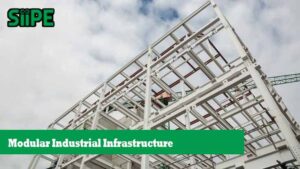As industries expand and global trade accelerates, the demand for industrial estates continues to grow. However, traditional industrial zones often face challenges such as high energy consumption, carbon emissions, and environmental degradation. To address these issues, the concept of eco-friendly industrial estates has emerged. These estates integrate sustainability, technology, and efficient infrastructure to support both business growth and environmental responsibility.
This article explores the key characteristics, benefits, and challenges of eco-friendly industrial estates, while highlighting their role in shaping a sustainable industrial future.
What Is an Eco-Friendly Industrial Estate?
An eco-friendly industrial estate is a planned industrial zone designed with sustainability at its core. Unlike conventional estates, eco-industrial parks focus on:
-
Energy efficiency through renewable sources like solar and wind.
-
Waste reduction using circular economy principles.
-
Green infrastructure with sustainable buildings and eco-landscaping.
-
Efficient logistics that minimize transport emissions.
These estates not only serve as hubs for manufacturing and logistics but also contribute to environmental conservation and community well-being.
Key Features of Eco-Friendly Industrial Estates
1. Renewable Energy Integration
Industrial estates consume massive amounts of energy. By adopting solar panels, biomass, and wind energy, eco-industrial parks reduce dependency on fossil fuels. Some estates also operate microgrids to balance energy distribution efficiently.
2. Green Building Standards
Buildings in eco-industrial zones often follow certifications such as LEED (Leadership in Energy and Environmental Design) or EDGE (Excellence in Design for Greater Efficiencies). These structures focus on energy-saving materials, natural lighting, and water recycling systems.
3. Circular Economy and Waste Management
A vital principle of eco-friendly estates is industrial symbiosis, where one company’s waste becomes another’s resource. For instance, heat generated by a steel factory can be used by nearby food-processing units.
4. Smart Water and Waste Systems
Efficient water treatment plants and rainwater harvesting systems ensure sustainable water usage. Solid waste is often processed into usable energy or recycled within the estate.
5. Digital and Smart Infrastructure
IoT-enabled monitoring systems track energy use, emissions, and logistics operations in real time. This digital transformation reduces inefficiencies and enhances sustainability efforts.
Benefits of Eco-Friendly Industrial Estates
1. Environmental Impact Reduction
Eco-industrial parks lower greenhouse gas emissions, reduce pollution, and preserve biodiversity. They create a balance between economic activities and ecological sustainability.
2. Cost Savings for Businesses
Although the initial investment in green infrastructure can be high, companies benefit in the long run from reduced utility costs, waste recycling, and efficient resource management.
3. Enhanced Brand Value
Operating in a sustainable industrial estate enhances a company’s image. Many global clients prefer suppliers committed to green initiatives, improving market competitiveness.
4. Regulatory Compliance and Incentives
Governments worldwide offer tax incentives, subsidies, and easier licensing for companies located in eco-industrial parks. This reduces bureaucratic challenges and supports sustainable expansion.
5. Attracting Global Investment
Eco-friendly estates appeal to foreign investors seeking long-term, sustainable opportunities. They align with ESG (Environmental, Social, Governance) standards, which are increasingly crucial in investment decisions.
Global Examples of Eco-Friendly Industrial Estates
-
Kalundborg Symbiosis, Denmark
-
A pioneer in industrial symbiosis, where companies exchange energy, water, and by-products, minimizing waste.
-
-
Tianjin Eco-City, China
-
A collaboration between China and Singapore, designed as a model for green urban and industrial development.
-
-
Jurong Innovation District, Singapore
-
A smart and green hub integrating research, advanced manufacturing, and sustainability practices.
-
These examples showcase how eco-industrial estates can successfully combine economic growth with environmental stewardship.
Challenges in Developing Eco-Friendly Industrial Estates
-
High Initial Investment: Green infrastructure requires significant capital.
-
Policy and Regulation Gaps: In some regions, weak enforcement of environmental laws hinders progress.
-
Limited Awareness: Many companies still prioritize short-term profits over long-term sustainability.
-
Technological Barriers: Adopting renewable energy and smart infrastructure requires advanced technology and skilled labor.
Despite these challenges, the long-term benefits outweigh the costs, making eco-industrial development a viable solution for the future.
The Future of Eco-Friendly Industrial Estates
The future of industrial development lies in sustainable and smart ecosystems. With the rise of Industry 4.0, AI-driven energy management, and circular economy models, eco-industrial parks will become essential drivers of global trade and manufacturing.
Governments, investors, and companies must collaborate to expand these initiatives, ensuring that economic growth does not compromise environmental well-being.
Conclusion
Eco-friendly industrial estates represent the next stage of industrial evolution. They balance business needs with environmental responsibilities, offering long-term economic, ecological, and social benefits. By integrating renewable energy, circular economy practices, and smart technologies, these estates pave the way for a greener and more resilient industrial future.










